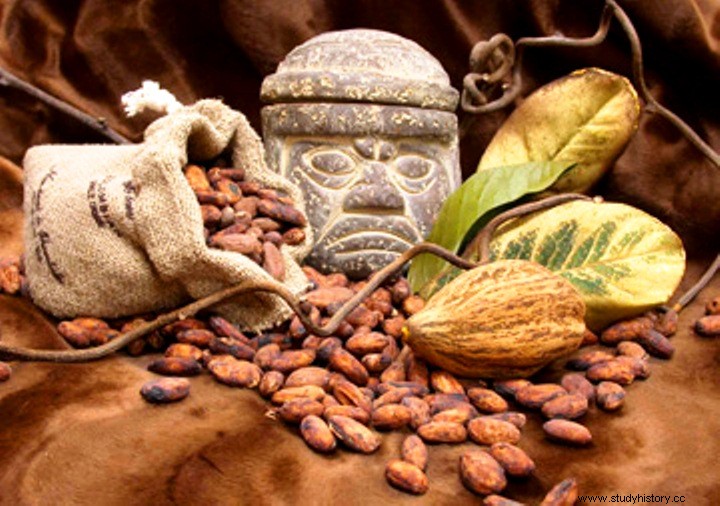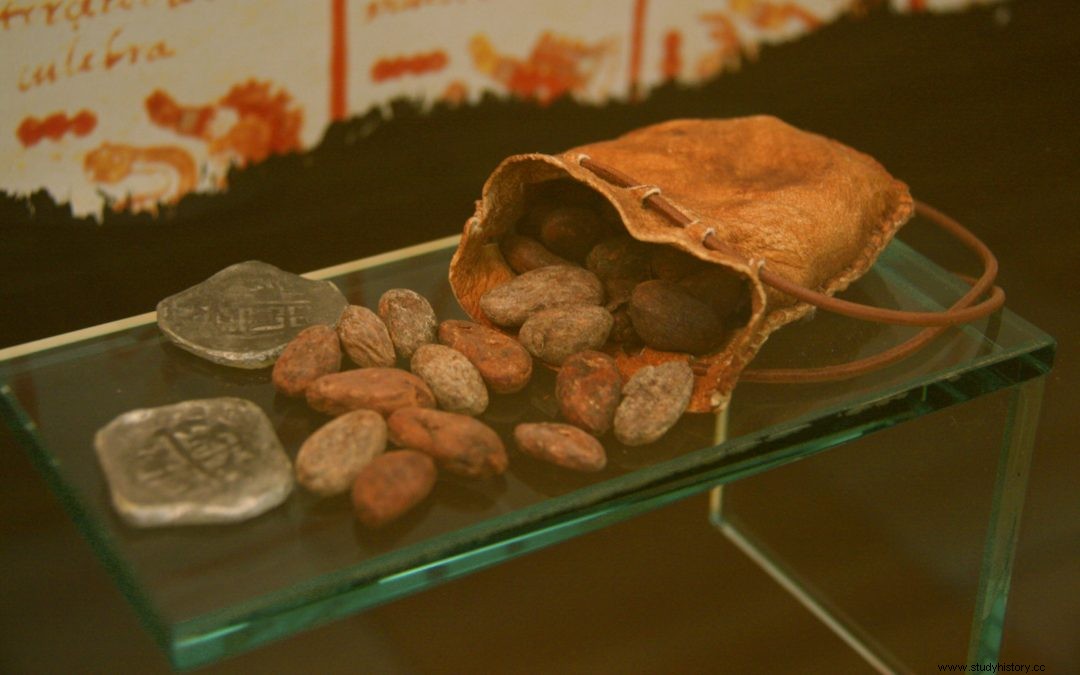There is a phrase, typical of parents, that as children we have all heard -and some, among whom I find myself, too many times- when we have asked them to buy something for us or money directly:What do you think? money grows on trees? Well now, many years later, I already have the arguments to refute that maxim. And I am not referring to the fact that banknotes are made from a combination of cotton and linen, obtained not from trees but from plants, or that traces of precious metals have been found in the organic remains of trees, I am referring to money taken directly from the tree and with which you could buy products or pay taxes.

If we search the RAE for the term botched , returns three meanings:
1. Work or work, generally maintenance, of little importance.
2. Work done poorly and carelessly.
3. Mex . Scam.
Save, as obvious, the first two definitions, in this article we will focus on the third.
After the conquest of the Mexica Empire, that new society had to be set in motion, and for this the circulation of currency was needed. Neither the pocket money carried by the Spaniards who crossed the pond, nor the periodic remittances of maravedís that were sent from Seville were enough to cover the needs of that vast territory that, moreover, continually grew. So, making a virtue of necessity, in 1522 Hernán Cortés began to mint money to pay his soldiers. Those first coins were irregularly shaped pieces of gold or silver cut from ornamental pieces from Moctezuma's treasure, to which some sign or notch was made to give them a certain value and make the minting official. Trying to improve that rudimentary minting, coins with more rounded shapes were made, but due to the scarcity of gold they began to add copper until the gold in those pieces began to shine by its absence. This coin was called tepuzque (from Nahuatl tepuztli , copper). And the truth, neither the Spaniards nor the indigenous people were convinced:the indigenous people got rid of them by throwing them into the rivers and lakes, and for the Spaniards tepuzque became synonymous with deceit or lies. The term tepuzque, in Mexico, derived in fudge with the meaning of scam.
Consequently, the problem remained unsolved. Given the difficulties of implementing an economy based on the European model, they decided to find out how the local economy worked before the arrival of the Spanish. And they hit it off with cocoa and all its uses...
drink, food, medicine, invigorating, stimulating... and currency in the Mexica culture.

Cacao, specifically the seeds, were used as currency because they fulfilled all the requirements of money:regulated and controlled (only the wealthiest families could have plantations), it can be counted and divided, and it is easy to preserve, store and transport. Likewise, when considering the xocolatl (chocolate in Nahuatl) as "the drink of the gods" and used in certain rituals and ceremonies, cocoa was a product, in itself, with a hierarchy in that society. So, the Spanish had no choice but to join that pre-Columbian economic model and accept cocoa beans as currency. Of course, just as the indigenous people had regulated the price of products in the markets, taxes and wages for work in "cocoa", the Spanish Crown regulated the value of cocoa so that both currencies could coexist:cocoa and cocoa. the maravedís who arrived from Seville. For example, in 1555 a silver real (34 maravedís) was equivalent to 40 cacaos and in 1575 to 100 cacaos.

Prehispanic markets were supervised by a kind of inspectors who watched prices, weights and measures , and payments made with false currency, either because they tried to sneak seeds from another product for cocoa or because they used "counterfeit" cocoa. Although it may seem strange, cocoas, like dollars or euros today, were also counterfeited:the pulp was removed from inside the seed, it was filled with mud and the shell was fitted again. So, it could be said that picaresque already existed in the American continent before the Spanish arrived.
Although in 1535 Carlos I ordered the establishment of Casas de la Moneda in Mexico, and later in Santo Domingo, Lima or Potosí, to mint money directly in America, the money that grew on trees continued to be used until the end of the 18th century.
